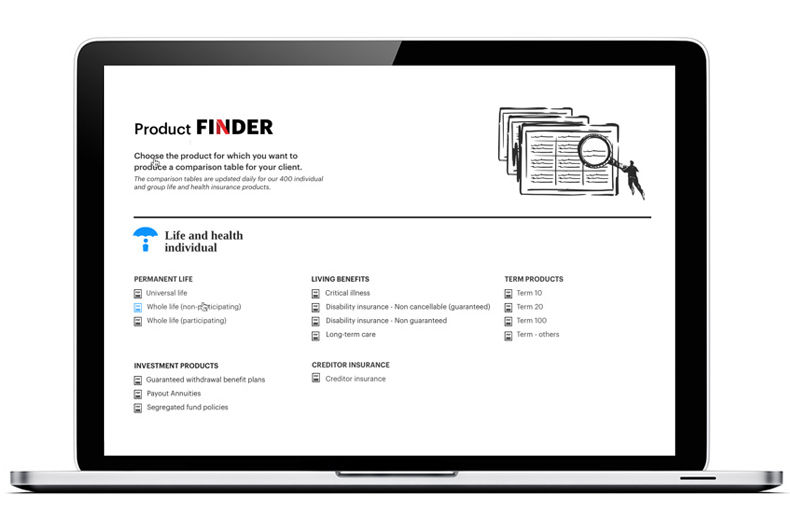The risks posed by climate change are not as serious for life and health insurers as they are for property and casualty insurers.
Yet life and health insurers cannot ignore this risk because the effects on their business are still unknown.
DBRS Morningstar looked at the strategies of the four largest publicly traded insurers in Canada: iA Financial Group, Great-West Lifeco, Manulife and Sun Life. They presented their findings in a report called Canadian Life Insurance Companies Make Strides on Environmental Commitments.
The rating firm observed that the four major insurers continue to make progress, both in understanding the impact of climate risk on their business and in their commitment to raising their environmental profile.
Where do dangers lurk for life and health insurers?
“Overall, risk is likely to come through investments in climate-vulnerable sectors in the investment portfolio and of those investments potentially becoming stranded assets. Mitigating this risk is the broad and diversified nature of the life insurers' invested assets, including limited direct exposure to any one industry that may be a heavy greenhouse gas (GHG) emitter or whose operations otherwise have a negative environmental impact or are likely to be significantly affected by climate change,” write Komal Rizvi and Marcos Alvarez, vice president, insurance, and senior vice president and head of insurance, respectively. Both work in the Global Financial Institutions group at DBRS Morningstar.
Good news
The rating firm mentions that these four life insurers incorporated environmental, social and governance (ESG) considerations into their overall enterprise risk management frameworks. It adds that regulators have also recommended incorporating a climate change scenario as part of the stress-testing process for each insurer to independently evaluate the impact on their operations.
Rizvi and Alvarez point out that Manulife is studying the impact of climate risk on underwriting, including on mortality and morbidity assumptions. For other insurers, the main focus is the impact on investments, they add.
Another area examined is carbon neutrality. Rizvi and Alvarez mention that financial institutions need to assess the impact of the transition process and the resulting economic consequences on their organizations. They give the example of Great-West Life and Manulife, which have independently evaluated the impacts of different transition scenarios on their business.
In November 2020, the Office of the Superintendent of Financial Institutions and the Bank of Canada announced a pilot project to evaluate the risks that the transition to a low-carbon economy could have on the financial system, they say, adding that Manulife and Sun Life are participating in this initiative.
Complacency not an option
DBRS Morningstar says that properly assessing climate risk can keep life insurers ahead of the curve as global attempts to transition to a low-carbon economy increase.
“Noncompliance with emerging standards in environmental disclosures and lack of progress in minimizing the impact of operations on the environment can also lead to reputational risk. Canadian life insurers have opportunities to capitalize on the move toward environmental sustainability by creating new products that meet the growing investor demand for green investments,” Rizvi and Alvarez explain.
The analysts distinguish Manulife and Sun Life as global leaders because they are the first to issue bonds to finance the construction of green infrastructure.
The challenge of asset management
The biggest hurdle for the Big Four Canadian life insurers is integrating environmental considerations in asset management, DBRS said in its report. “Canadian life insurers have not yet taken a broad exclusionary approach regarding sectors that are vulnerable to climate risk or that may be considered detrimental to the environment. However, the diversification of the investment portfolios and the high credit quality of the holdings limit the impact that climate risk may have on the insurers,” Komal Rizvi and Marcos Alvarez point out.
The authors go on to note that efforts have been made, particularly at Sun Life, to integrate climate-related risks into the investment risk management process. In addition, in response to investor demand, life insurers have expanded their ESG fund offerings. “life insurers are also in a unique place to help clients incorporate ESG considerations into the investments they make,” the analysts say.
They give the example of Sun Life, which launched a proprietary ESG integration evaluation framework in 2020 to help its group retirement plan sponsors make informed decisions about the investment options they offer their employees in their work plans. Overall, life insurers have also increased their commitments to renewable energy, Rizvi and Alvarez note.
“As sustainability becomes an increasingly important factor for investors, it presents opportunities for the life insurers to become well positioned to take advantage of investor appetite. It is important to note however that while representing a growing trend, the newer sustainable funds and increased investments in renewable energy remain a small proportion of overall investments," the report states.
How can insurers reduce their environmental footprint?
DBRS Morningstar finds that the life insurers surveyed have made steady progress in reducing the environmental impact of their operations.
Three companies have committed to being carbon neutral. Great-West Lifeco is the only exception, the report states. Manulife was the first to achieve this status in 2019, through its ownership of natural assets such as farmland and forests, followed by iA Financial Group in 2020 and Sun Life in 2021.
To further offset their environmental impacts, large life insurers have also taken steps to significantly reduce their GHG emissions, further cut down on waste, and certify and manage the properties they own according to green certifications. Great-West Lifeco stands out as a leader in this area, DBRS Morningstar says.




















